12 Vintage Clocks That Are Always in Demand With Collectors
Collectors have a special admiration for vintage clocks that tell more than just time. Each piece carries a bit of history, craftsmanship, and charm that modern designs rarely match. From elegant mantel clocks to classic wall pieces, these treasures continue to draw attention at auctions and antique shops.
This post may contain affiliate links, which helps keep this content free. Please read our disclosure for more info.
1800s Seth Thomas Adamantine Mantel Clock
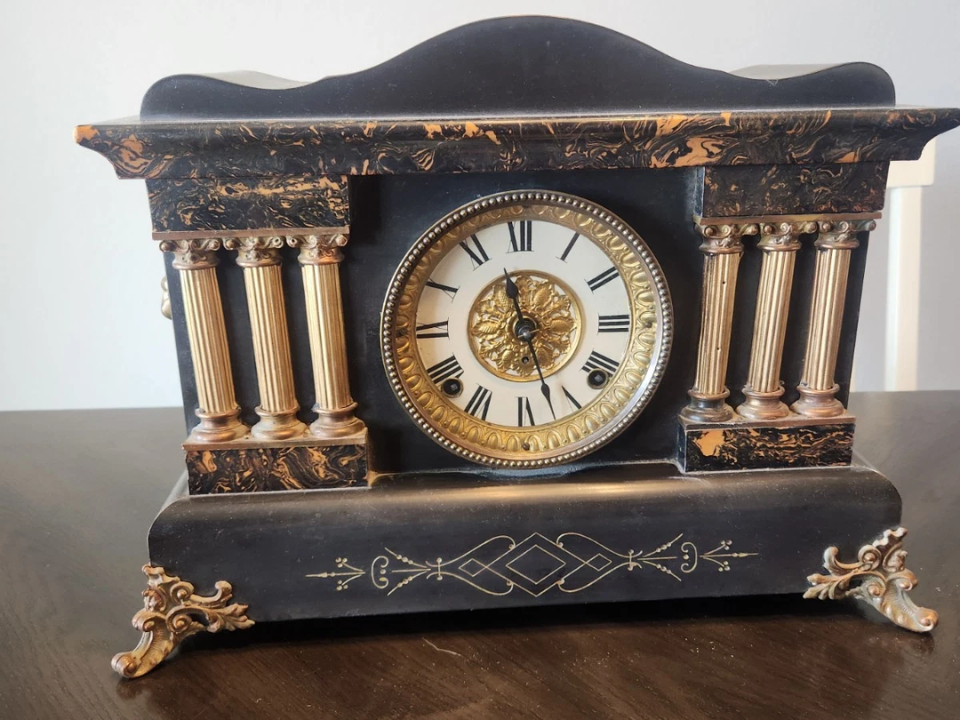
The Seth Thomas Adamantine Mantel Clock was produced in the late 1800s and is known for its glossy marble-like finish made from celluloid veneer. These clocks were built with brass movements and often featured ornate columns, lion head handles, and decorative feet. Their black or mahogany tones made them stand out on Victorian fireplaces. Today, a well-kept piece is worth between $250 and $500 depending on the design and working condition. Many collectors value them for their durability and timeless charm that continues to draw interest.
Collectors appreciate how the Adamantine series represents early American clockmaking quality. Each clock was built to last and designed to look luxurious without being overly expensive at the time. Many still run perfectly after more than a century with simple maintenance. They are easy to identify by the small Seth Thomas label on the dial or movement. Finding one in original condition is a true highlight for any clock collector.
1900s Ansonia Crystal Regulator Clock
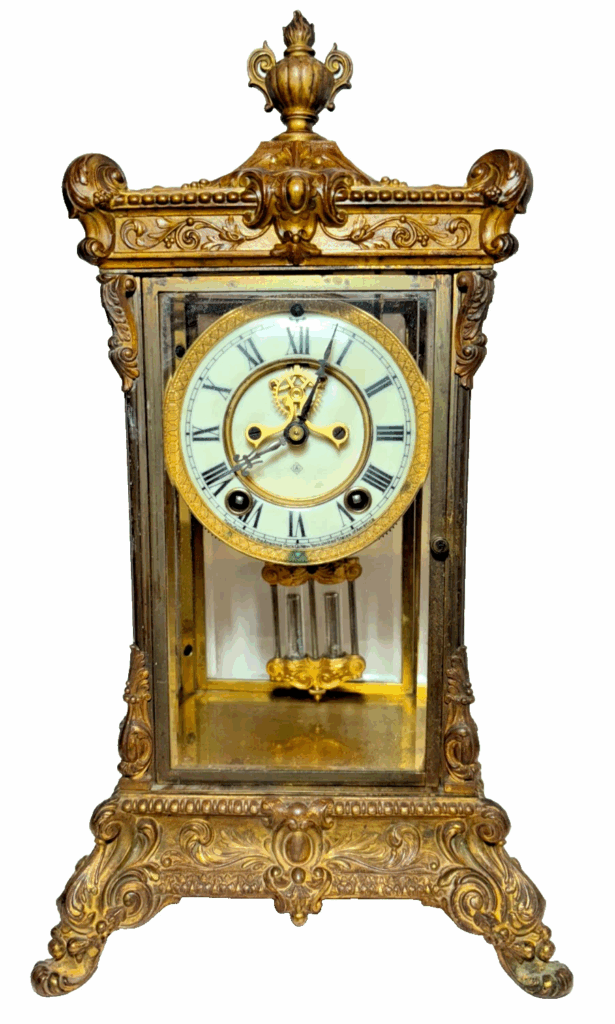
Ansonia produced their famous Crystal Regulator Clocks in the early 1900s using brass frames and beveled glass panels. The design allowed the inner pendulum and movement to be visible, making it both functional and decorative. Many feature porcelain dials with Roman numerals and delicate filigree detailing. These clocks typically sell for $400 to $900, depending on rarity and ornamentation. Their elegant style makes them a centerpiece in both antique collections and classic home interiors.
Collectors admire these clocks for their refined craftsmanship and the way the pendulum’s motion is visible through the clear glass. The polished brass frame often develops a natural patina that enhances its beauty over time. Some include enamel artwork or intricate designs on the faceplate, adding to their uniqueness. Because of their fragile glass casing, intact examples are highly prized. The combination of artistry and mechanical precision makes them enduring favorites.
1890s Junghans Wall Regulator Clock
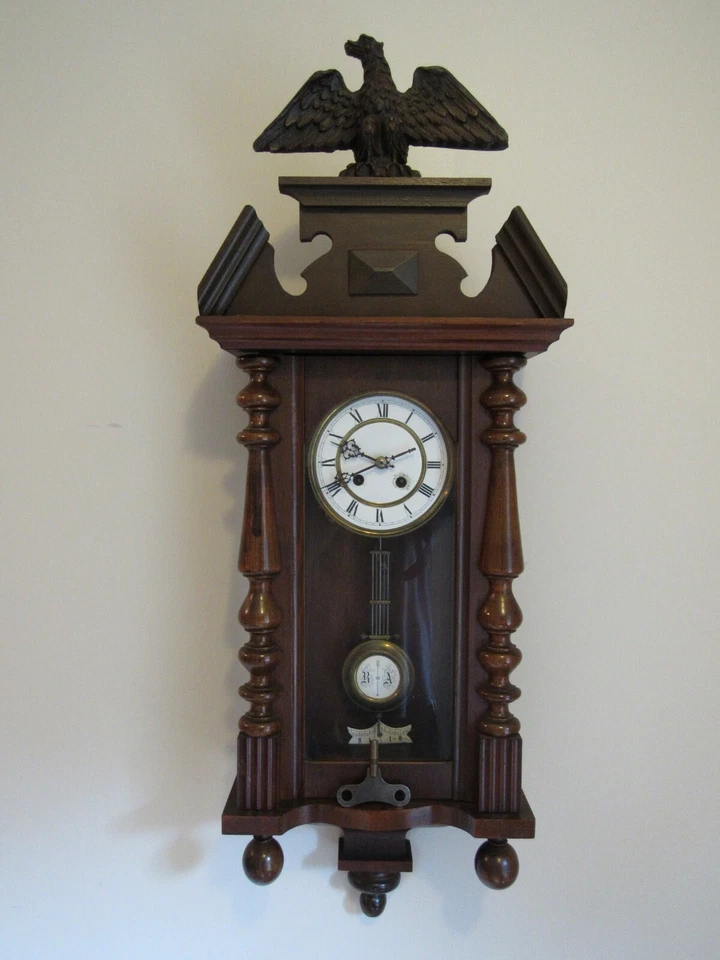
German company Junghans introduced its Wall Regulator Clocks between the 1890s and 1910s, earning a strong reputation for reliable timekeeping. These clocks were made from rich walnut or oak wood with hand-carved details. Their long pendulums and precise movements became hallmarks of German craftsmanship. Depending on the design and condition, prices typically range from $300 to $700. Many still hang proudly in homes where they continue to keep accurate time.
Enthusiasts value Junghans clocks for their solid build and graceful proportions. The combination of ornate woodwork and clear ticking sound gives them an old-world appeal. Some models include decorative finials and beveled glass doors that reveal the pendulum. The Junghans trademark, often stamped on the movement, helps identify authentic pieces. Collectors find them both reliable and beautiful representations of early European engineering.
1900s Chelsea Ship’s Bell Clock
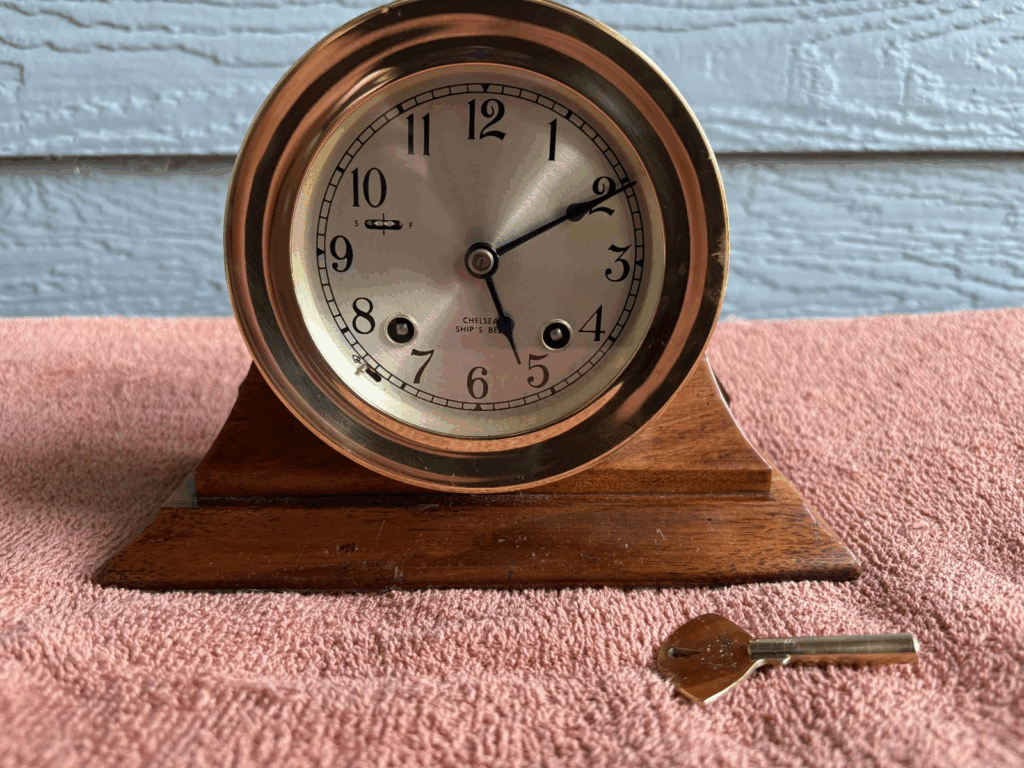
The Chelsea Ship’s Bell Clock first appeared in the early 1900s and became a standard for maritime and naval use. Made from solid brass and fitted with precision movements, these clocks were built to withstand shipboard conditions. They feature an eight-day mechanical movement and a bell mechanism that chimes in traditional ship’s watch patterns. Collectors pay between $800 and $1,500 for original models in good working order. The polished case and strong chime make them instantly recognizable.
Collectors admire the Chelsea Ship’s Bell for its nautical heritage and quality construction. Many were mounted on wooden bases or bulkheads aboard actual vessels. The clock’s weight and sturdy feel speak to its original purpose as a dependable maritime instrument. Restored versions are popular among sailors and nautical enthusiasts alike. Its historical link to seafaring life adds depth to its collectible appeal.
1800s Vienna Regulator Clock
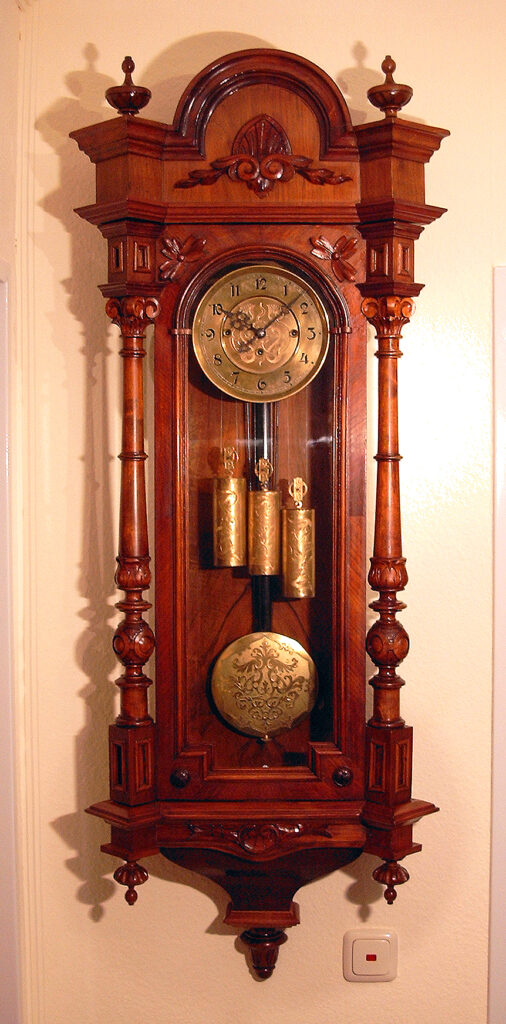
Originating in Austria, Vienna Regulator Clocks were crafted during the mid-1800s and are celebrated for their elegant proportions and long cases. Most were made from walnut or mahogany with fine glass panels and brass weights. These clocks were designed for accurate timekeeping and often hung in European public buildings or homes of the wealthy. Prices today can range from $1,000 to $3,000 depending on the maker and style. The long pendulum and distinctive craftsmanship make them stand out in antique collections.
Collectors admire Vienna Regulators for their refined appearance and consistent performance. Their delicate carvings and elongated cases create an unmistakable silhouette on any wall. Many were produced by master artisans who took pride in both beauty and function. A well-maintained Vienna clock can still operate with remarkable accuracy. Owning one offers a glimpse into 19th-century European artistry and design.
1800s Waterbury Gingerbread Clock
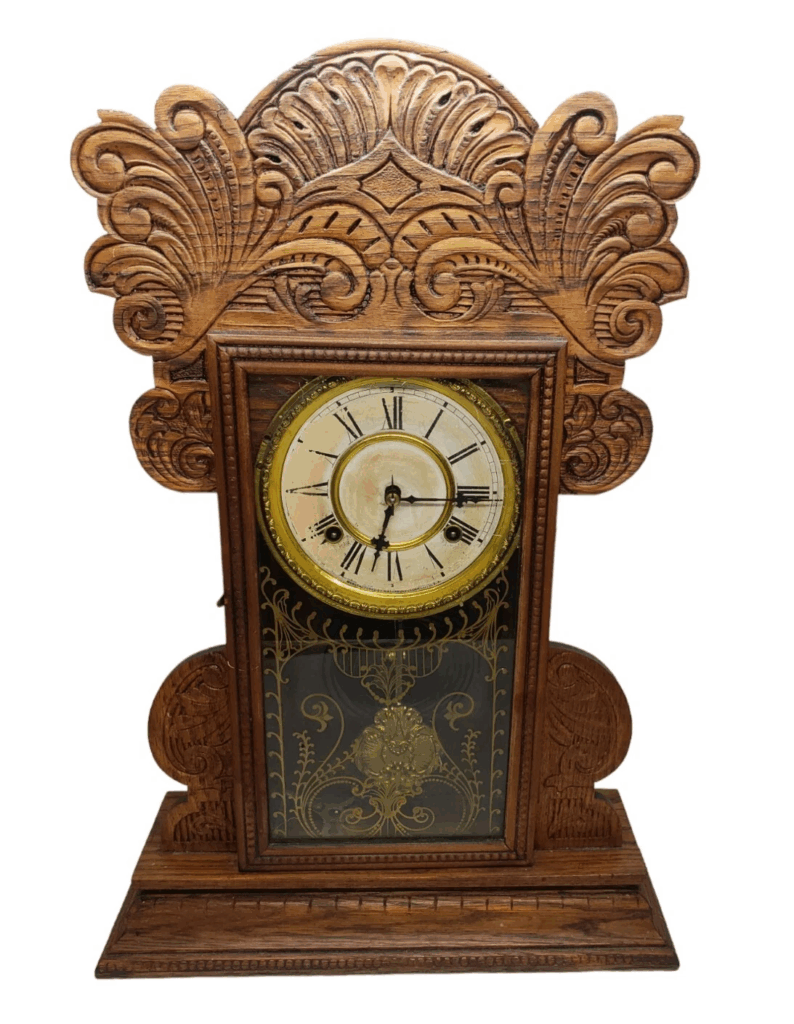
Produced by the Waterbury Clock Company in the late 1800s, this clock earned its nickname from its carved wooden case that resembles gingerbread trim. Made primarily from oak or walnut, the design often includes ornate patterns and pressed detailing. These clocks were affordable at the time, yet visually striking enough to decorate American homes. Collectors today pay between $150 and $300 for well-preserved examples. Some still feature their original paper dials and pendulums.
Enthusiasts enjoy the Waterbury Gingerbread Clock for its charming folk-art appearance. Its steady ticking sound and rustic design bring warmth to vintage-themed interiors. Many feature small glass panels painted with floral or landscape motifs. The key-wound movement provides a satisfying ritual for owners who like maintaining antique clocks. Their blend of simplicity and style keeps them a steady favorite among collectors.
1900s Howard Miller Grandfather Clock
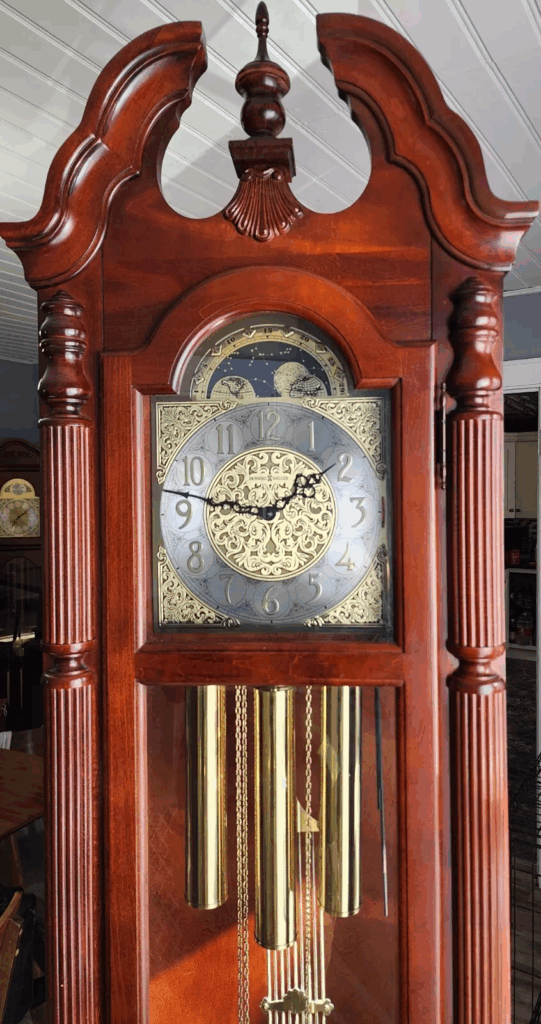
Howard Miller introduced many of its iconic Grandfather Clocks during the mid-1900s, becoming a leader in American clockmaking. These tall clocks are usually made of cherry, oak, or walnut wood with brass pendulums and ornate faces. The chime melody, often Westminster, adds an elegant touch. Depending on age and model, these clocks are valued between $700 and $1,500. They continue to symbolize sophistication in traditional home décor.
Collectors value Howard Miller Grandfather Clocks for their graceful height and reliable build. The swinging pendulum and clear chimes bring a nostalgic rhythm to any room. Some models feature moon-phase dials and etched glass doors, adding visual interest. The company’s long history of quality manufacturing has kept these clocks relevant across generations. Many families treat them as heirlooms passed down over time.
1800s Gilbert Steeple Clock
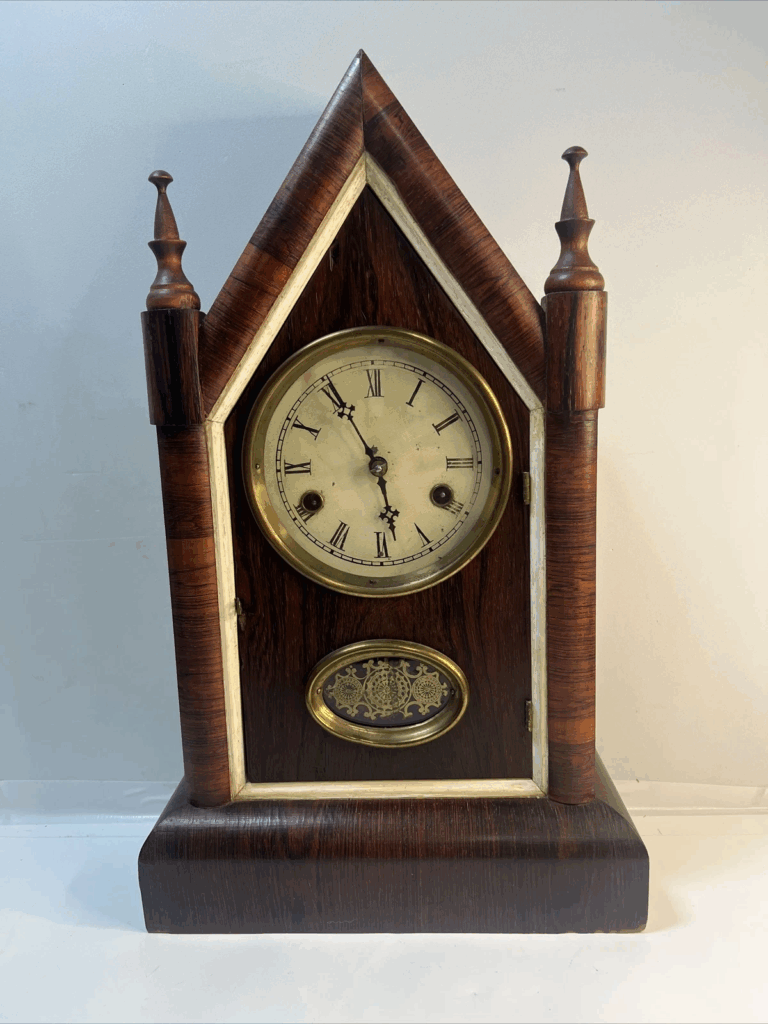
The Gilbert Steeple Clock was introduced in the mid-1800s and became one of the most recognizable American designs of its time. Shaped like a church steeple, the case was made from polished mahogany or walnut with brass fittings. The clock features an eight-day movement and reverse-painted glass panels on the door. Market prices for authentic pieces range between $200 and $400. Their compact shape makes them easy to display on mantels or shelves.
Collectors admire the Gilbert Steeple Clock for its simple yet appealing structure. The pointed top design gives it a distinctive presence among other 19th-century clocks. Many were produced in Connecticut, where Gilbert’s factory stood as a cornerstone of American clockmaking. Some versions include scenes painted on the lower glass, increasing their charm. These clocks are often treasured for their quiet elegance and dependable performance.
1920s Tiffany and Co. Desk Clock
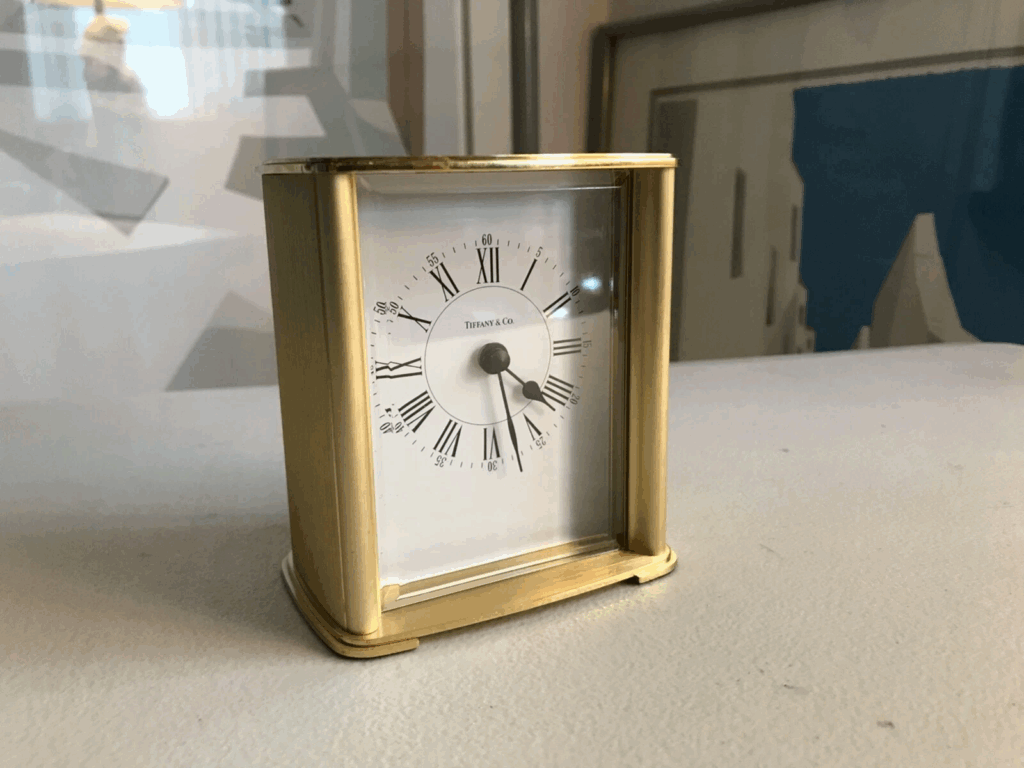
Produced during the 1920s, Tiffany and Co. Desk Clocks combined luxury and fine engineering. Typically made from brass, glass, or silver with enamel faces, these clocks reflected the Art Deco style of the period. Many were sold to affluent customers seeking beauty and precision in their offices or homes. Today, authentic examples are valued between $1,000 and $2,500 depending on rarity. The brand’s name alone adds lasting appeal to each piece.
Collectors hold Tiffany Desk Clocks in high regard because of their elegant design and superior materials. Their compact form makes them ideal for display without taking up much space. Many feature decorative hands and numerals inspired by 1920s artistic trends. Some include internal serial numbers confirming authenticity. A well-preserved Tiffany clock remains a fine investment for collectors who love early 20th-century design.
1870s New Haven Cottage Clock
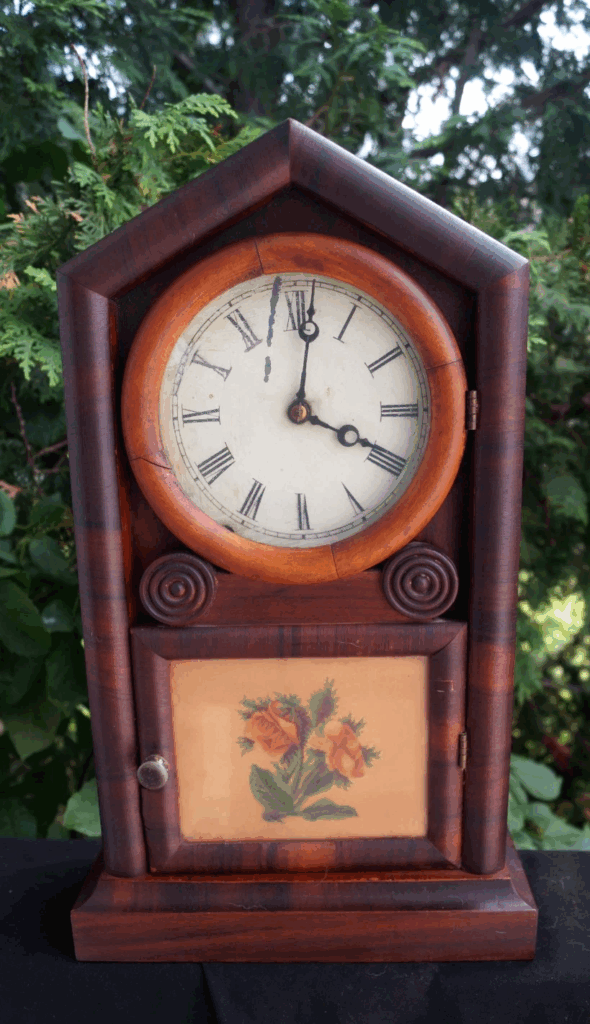
The New Haven Cottage Clock appeared in the 1870s and became popular for its affordability and charming simplicity. Built from pressed oak or walnut, it often included reverse-painted glass doors and brass movements. The compact rectangular shape made it perfect for small homes. These clocks generally sell for $100 to $250 depending on the finish and working order. Their classic ticking sound continues to charm antique lovers today.
Collectors enjoy New Haven Cottage Clocks because they represent the accessible side of 19th-century American clockmaking. They were practical, stylish, and reliable household timepieces. Some examples still retain their original paper labels inside the case. The mechanical parts are easy to service, making them appealing for restorers. Their quiet charm and historical value make them enduring pieces in many collections.
1920s Sessions Tambour Clock
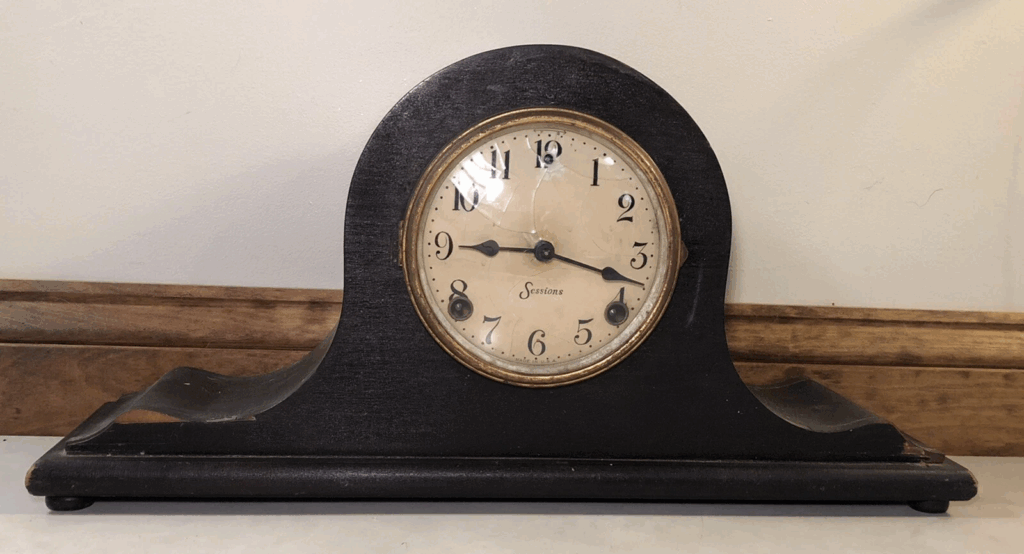
The Sessions Tambour Clock was released in the 1920s and became known for its arch-shaped wooden case. Usually made from mahogany or walnut, it was designed for use on mantels and desks. These clocks feature an eight-day mechanical movement and a rich chime tone. They sell for about $150 to $350 depending on the finish and dial condition. The curved design gives it a classic silhouette that fits any traditional room.
Collectors appreciate the Sessions Tambour Clock for its balanced mix of style and function. The clear numbering and soft chime create a calming atmosphere. Many of these clocks still work after minor restoration. Some later versions included brass bezels and beveled glass for added appeal. Their popularity endures because they reflect the charm of early 20th-century home décor.
1930s Atmos Clock by Jaeger-LeCoultre
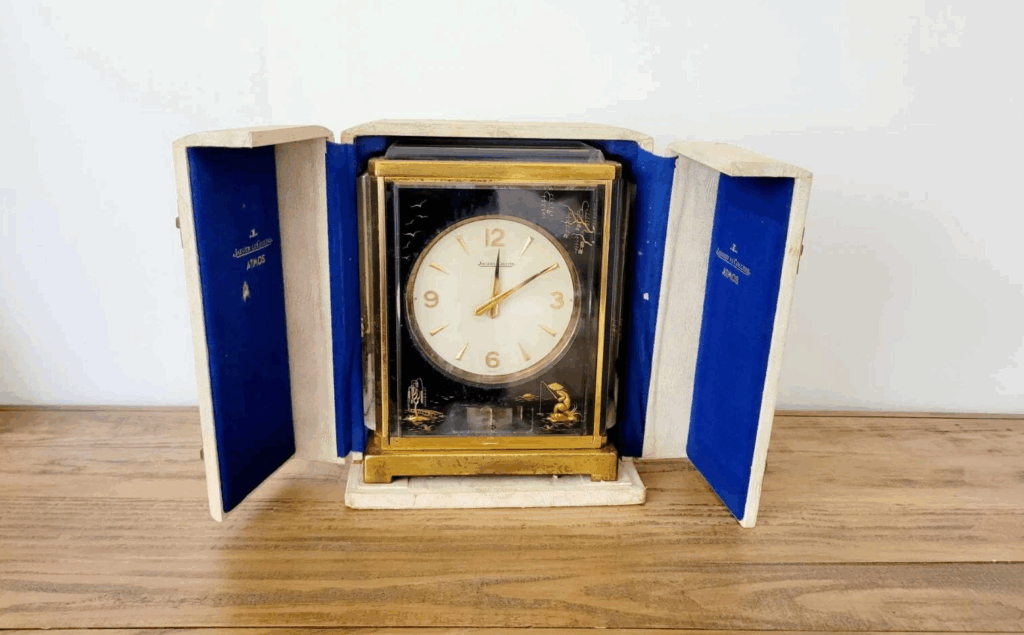
Introduced in the 1930s, the Atmos Clock by Jaeger-LeCoultre remains one of the most fascinating mechanical timepieces ever made. It runs using temperature and air pressure changes, requiring no winding. The case is usually made from brass and glass with visible movement inside. Prices range from $1,500 to $5,000 based on the model and age. Its self-powered mechanism makes it unique among collectible clocks.
Collectors treasure the Atmos Clock because it combines engineering ingenuity with visual elegance. The motion of its slow pendulum gives it a graceful appearance. Many were given as gifts for anniversaries or corporate awards. Original packaging and certificates can significantly increase value. This clock stands as both a scientific marvel and a statement of timeless sophistication.
Antique clocks remain treasured for their style, heritage, and lasting appeal. Each one holds a bit of history that continues to charm collectors and enthusiasts alike.
This article originally appeared on Avocadu.
